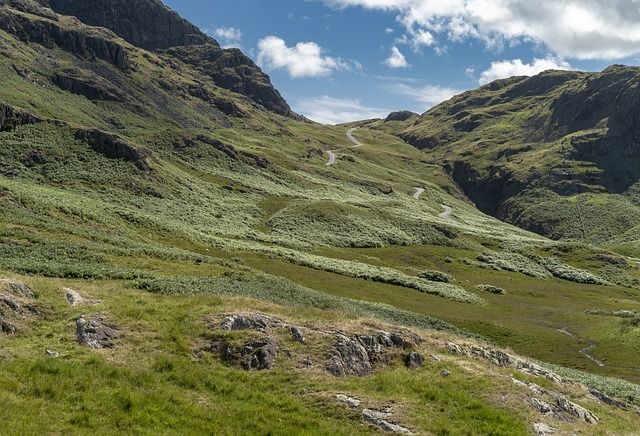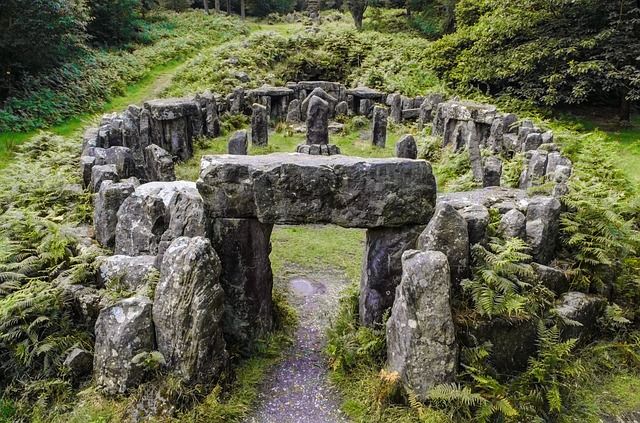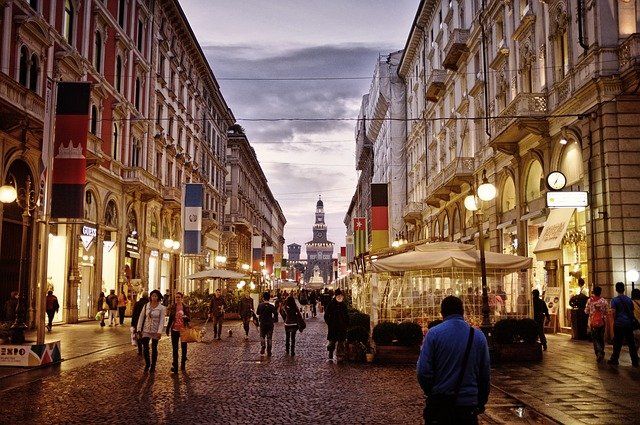Following the fall of Rome, the British high king Vortigern invited Saxon troops to occupy the country to defend it against attacks from the north. This probably took place at the end of the 440s.
According to one theory, Vortigern’s invitation marked the beginning of Anglo-Saxon immigration to Britain. An alternative view is that Anglo-Saxons were already present, and the invitation merely swelled their numbers.
In either case, Vortigern’s request led to successive waves of immigration for the rest of the century.
Living in terror
The chronicler Gildas makes some scathing remarks about Vortigern’s decision. What was intended for the protection of the country actually ‘sealed its doom’. The introduction of ‘the fierce and impious Saxons’ was like inviting wolves into the sheep-fold.
‘Nothing was ever so pernicious to our country’, Gildas exclaims. ‘What palpable darkness must have enveloped their minds — darkness desperate and cruel!’
Before long, far from fighting to defend our country, the Saxons were waging war against it and plundering the whole island. Bede believed that the decision to invite them had ‘been ordained by God as a punishment’ for the wickedness of the Britons.
The Anglo-Saxons brought their religion to Britain with them. This appears to have been a conglomeration of fertility cults, involving idolatrous rituals and sacrifices. The Anglo-Saxons turned out to be ruthless towards the indigenous population who, as Bede puts it, ‘began to live in terror’.

Ruthless
The Britons were soon being driven by the Anglo-Saxons northwards and westwards into Strathclyde, Lothian and Galloway, Wales and the West of England (Cumbria and Cornwall).
The settlers were brutal in their hostility to the Christianity they found in Britain. With ruthless determination they destroyed many church buildings. It seems that some of the attempts to resist this on the part of the British people were quite heroic.
How strong did the church remain after these attacks? There is disagreement about this. It is generally recognised that south-east England became bereft of the gospel. Beyond that, it is uncertain how far Britain became paganised.
Most historians think the church retreated with the indigenous population into the western fringes, with perhaps the odd Christian community surviving here and there. It is known that a church survived in the Elmet area of Yorkshire for 150 years after the Anglo-Saxons arrived.
However, others claim that a more widespread Christian presence remained in England. The question must remain open but, on balance, the evidence suggests that most of England became pagan.
Martin’s monastery
Bede is critical of the Christian Britons for their failure to preach the faith to the Saxons and Angles. The revived Druidism of the previous century had dented the influence of Christianity and, for a time, England largely lost the message of the gospel.
During these turbulent years missionaries sought to re-evangelise our island. To trace the story of this missionary endeavour we must backtrack to the middle of the fourth century, and cross the channel.

It seems that the re-evangelisation of Britain had its origins in 360 near Tours in Gaul, where a man called Martin founded a monastery.
Martin was Italian and his parents were pagans. When he was 10, Martin defied their displeasure and began to attend church. It seems that he was converted at the age of 12.
Later he complied with his father’s wishes and joined the army, but as soon as he was free to leave he began to prepare himself for the service of God.
He went first to Poitiers in France to sit under the ministry of a man called Hilary. After some time he returned home, and was instrumental in the conversion of his mother. He returned to Poitiers, to discover that Hilary had left because Arianism had achieved a temporary triumph there.
Martin returned to Italy and opened a monastery at Milan. Here, he too was hounded by the Arians, and had to move on. Eventually, hearing that Hilary was back in Poitiers, Martin rejoined him and founded a monastery nearby.
First evangelist
Before long, Martin was called to become the pastor of the church at Tours. It was during this period of his life that he founded his most famous monastery, Marmoutier, about two miles outside the town.
He was joined by 80 disciples. They practised common ownership of possessions. They all ate together. Time was spent in prayer and in copying the Scriptures, a laborious but necessary task in the days before printing.

What is the connection between Martin’s monastery and the re-evangelisation of 5th century pagan Britain?
One of the first British evangelists in that period, Ninian, may have been one of Martin’s disciples at Marmoutier. Historians differ on this point.
One writer states categorically: ‘Ninian, a Briton educated at Rome, went to live at Marmoutier under St. Martin’. Another suggests that Ninian merely took a break at Marmoutier while travelling home to Britain from Rome.
Yet others believe that Ninian’s connection with Martin was limited to correspondence by letter. Finally, some deny all contact between Ninian and Martin — one historian reckons that Ninian didn’t live until a century after Martin’s time!
He thinks that the twelfth-century Life of Ninian, which provides the earliest evidence for Ninian’s relationship with Marmoutier, is legendary.
Glistening white house
So we cannot be sure on this point. Still, it is clear that monasteries similar to Marmoutier did become evangelistic centres in fifth-century Britain.
Merle d’Aubigné prefers to avoid the term ‘monastery’ in this context. The word could convey the wrong impression because of what monasticism came to mean in Roman Catholicism.
He suggests that ‘missionary college’ better captures the spirit of these early British institutions.
We actually know little about Ninian himself. Bede tells us that he was British, and that some of his training had taken place in Rome.
This latter statement has been disputed by many historians. It could be an example of the tendency to associate significant figures with Rome in order to boost the credibility of the Roman Church.
However, the rest of Bede’s information is likely to be reliable. Ninian evangelised the Picts in southern Scotland, naming his Church after ‘St. Martin’. The church was at Whithorn in Galloway, overlooking the Solway Firth, some 35 miles from Stranraer. His remains are buried there.
The church was unusual for those days, being built of stone. It was commonly known as Candida Casa. This means ‘Glistening White House’ and may refer not just to its physical appearance but also to its spiritual atmosphere.
Patrick
Although Ninian’s main missionary activity was in southern Scotland, he may also have conducted preaching tours as far north as the Moray Firth, and even ventured south into the English Lake District.
Roughly contemporary with Ninian in the fifth-century was Patrick. We know more about him, because two of his own works have survived.
He was from Britain. There have been several suggestions as to where he was born. There seems no reason to doubt a tradition reaching back at least to the ninth century that says he came from the Dumbarton area.
Just east of Dumbarton, on the north bank of the Clyde, stands the village of Old Kilpatrick. The backdrop to the area is provided by the Kilpatrick hills. These names may well testify to the area’s ancient association with Patrick.
Many legends have grown up about Patrick. I shall restrict myself to what we know of him from his own writings.
Christian family
He came from a well-to-do Christian family. His father was a member of the local municipal council, and a deacon in the church. His grandfather had been an elder.
However, by the age of 16 Patrick was still unconverted. At this time he was taken captive along with many others and transported to Ireland. He was taken to a wooded area called Foclut on the west coast.
This was probably the area now known as Downpatrick in County Mayo. Here Patrick spent the next six years in slavery, undergoing great hardship. However, in God’s gracious providence, it became the occasion of his conversion.
His conversion did not result from hearing the gospel in Ireland, for Patrick tells us that the Irish had no knowledge of God at that time. They still worshipped idols.
Some believe this statement refers only to Ulster, and that Christianity was already present in other parts of Ireland. However, it is probable that Patrick was no longer in Ulster when he was converted, and his statement is most naturally understood as referring to the whole of Ireland.
His conversion probably occurred because the seed of God’s Word, sown in his mind at home, now bore fruit. Misfortune drove him to prayer, and he began to believe the gospel.





